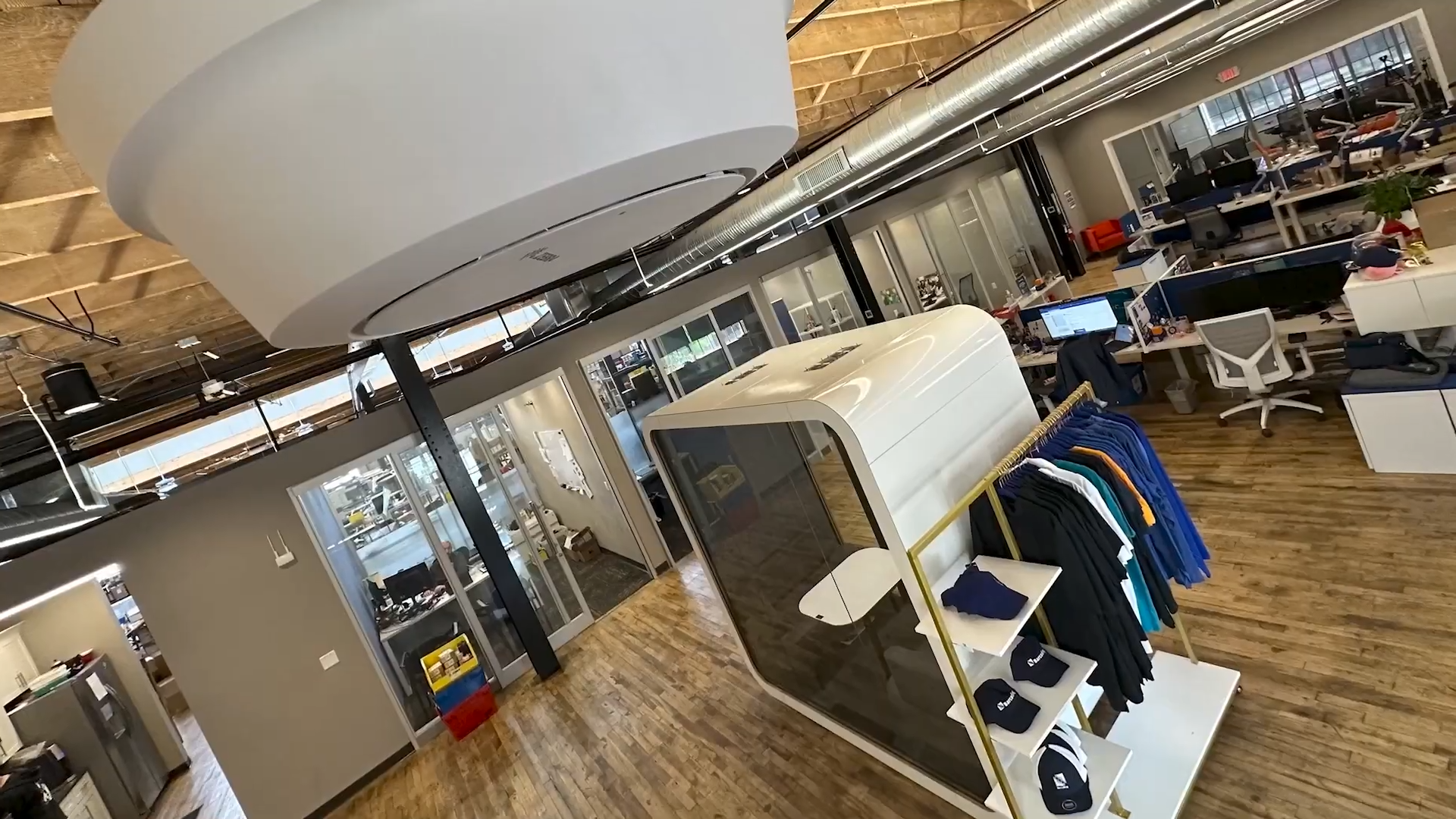The success of any warehouse or distribution center depends on logistics that are far more complex than simply moving products from point A to point B. Interdependent networks of IT assets such as barcode scanners, mobile and handheld computers, networked printers, and even IoT-connected equipment and devices are in constant use in every corner of operations, in support of efficient receiving, fulfillment, and shipping.
These devices and equipment make up the technology infrastructure that supports efficient operations. Failures, delays, or performance problems with any tech asset can ripple through a facility and lead to losses that can be measured in productivity, repair costs, and even damaged customer relationships.
A well-maintained base of tech assets ensures not just day-to-day productivity across your operations, but also long-term business sustainability. Proper IT asset maintenance is a strategic imperative that not only ensures maximum value from the full device lifecycle; it also helps ensure optimal performance that supports worker productivity.
By keeping assets updated, optimized, and in top working order, you prevent outages while maximizing ROI on your enterprise technology investments. In this article, we’ll review the asset maintenance best practices and solutions that will keep your technology infrastructure in optimal shape to support efficient, connected, profitable warehouse and DC operations.
How Asset Maintenance Supports Optimal Business Performance
Without sound IT asset maintenance, productivity grinds to a halt and supply chain visibility is lost. When barcode scanners or mobile computers stop working, picking and shipping stop, too. Manual workarounds mean higher labor costs, slowed productivity, and increased risk of human error in work processes.
As equipment ages, maintenance becomes even more critical. Without proactive maintenance, risk of equipment failure increases—and that leads to reactive repairs and the lost work time and higher costs they can bring. But repeated purchases of new equipment aren’t a sound alternative to maintenance, since new assets come with high price tags, too.
In addition, the data and insights that come with closely monitoring and meticulously maintaining assets can be invaluable for financial planning and budget forecasting. And you can’t access asset health and maintenance data if you don’t capture and collect it.
Conversely, optimized asset maintenance improves productivity, enhances visibility and transparency, controls costs, and delivers clarity on technology ROI.
Asset Maintenance Best Practices
Maintaining optimal uptime and tech asset performance in a complex workplace environment can be streamlined by taking a methodical approach and following these key practices:
1. Centralize Asset Inventory
Maintain a single, centralized, up-to-date inventory of all assets, including type, location, user, status, maintenance records, contract agreements, and more. Conduct regular audits to ensure accuracy.
2. Document Meticulously
Every maintenance activity, update, new installation, reassignment, or change made to an asset should be logged on its record. Comprehensive asset histories can be an important source of data and insights. The same goes for processes, procedures, and standard configurations. Detailed documentation helps standardize and ensure consistency.
3. Tag & Track All Technology Assets
Use appropriate data capture and labeling technologies to label and track every asset. Barcode labels and RAIN RFID tags can streamline, simplify, and automate processes, making it faster and easier to record and update information and less likely to introduce a human error in the data entry process.
4. Standardize Purchases
Buying new assets in appropriate quantities helps reduce the variety of spare parts needed, simplifies maintenance and training needs, and establishes uniform specifications for equipment. Buying in quantity can also help maximize spending power on purchases.
5. Manage Device & Equipment Configurations
Establishing and following enterprise policies for device configurations ensures a predictable level of standardization across your asset fleet. This helps reduce variations in issues that can arise, streamlining the path to solutions and minimizing one-off problems that require more time and effort to solve.
6. Perform Quality Control Checks
When new or repaired equipment is brought back into service, always perform and document QC checks to ensure proper configuration and performance before handing over to assignees.
7. Schedule Preventive Maintenance
Preventive maintenance is proactive and scheduled in advance, based on manufacturers’ recommendations to optimize performance, replace worn components, and minimize the likelihood of equipment failures.
8. Monitor Performance
Capturing, collecting, and analyzing asset performance data can help your team determine optimal preventive maintenance schedules and device replacement cycles. Utilization rates, mean times between failures, and costs for repairs can all be valuable information for planning and budget development.
9. Solicit Regular User Feedback
Set up a system that makes it fast and easy for users to get help or answers when issues arise—and listen to their input. End users often have firsthand insight into the conditions or factors involved in performance problems or equipment failures.
10. Plan for End-of-Lifecycle Disposition
Every asset has a lifecycle that ends with proper disposal and replacement. Good planning makes the transition to replacement equipment seamless.
11. Automate
It’s all a lot to keep up with: You’ve got preventive maintenance schedules, repairs, replacements, updates, new application installations, and QC checks—for every asset across the enterprise. Can you monitor it all on a series of spreadsheets? Maybe, but time spent in spreadsheets isn’t time spent optimizing device performance and supporting employee productivity.
An asset management solution like IntelliTrack® can be a game-changer for keeping all the details organized and up to date—and for integrating best practices into your process. Track and monitor asset locations and users, schedule preventive maintenance with reminders, and analyze and report on the data that’s most important to your teams. IntelliTrack users get a holistic view of all their enterprise assets, locations, users, conditions and statuses, configurations, updates, planned maintenance schedules, lifecycle details, and more.
And because it’s all centralized and digitized, there’s just one source of truth—and nothing falls through the cracks.
Do You Need to Partner With an ITAM Expert?
For companies juggling multiple locations and highly specialized asset types, outsourcing asset management can be the right choice to save time and resources while leveraging the OEM relationships and experience of a trusted partner. The more assets, users, asset types, and system complexities you have, the more you may benefit from experts to help move you toward a unified endpoint management approach—by first establishing actual visibility into your current asset landscape.
Start your search by looking for providers who can demonstrate expertise in your industry and experience with the specific asset types your teams use. Look for a proven track record implementing new systems, troubleshooting existing technology, overseeing maintenance and repairs, and handling warranty issues. If you operate multiple sites, geography can become an important factor—especially in terms of on-site response.
Review integration capabilities to ensure they can sync with your ITAM system or provide their own management software. Ensure they provide the tracking visibility and reporting you need. Formalize detailed service level agreements for guaranteed response and resolution times based on asset priorities.
When evaluating outsourcing providers, look for:
- Customizable services to meet your specific needs
- Local/regional resources to minimize wait times
- Strong relationships with major equipment vendors and manufacturers
- Technicians and specialists certified in the right standards and asset types
- Transparent pricing and contracts to avoid surprise costs
- Easy Integration with your ITAM system
- Proof of data security and asset chain-of-custody controls
- Detailed SLAs clarifying response and resolution times, as well as expectations for proactive services
Proper asset maintenance keeps your operation productive, data flowing, and costs controlled while extending the lifetime ROI of technology investments to optimize total cost of ownership. And the insights into costs and utilization can be incredibly valuable for planning, budget development, and demonstrating IT’s enterprise value. Find out how an IntelliTrack can help your stakeholders in Operations, IT, Finance, and Procurement achieve a holistic yet detailed view of your IT asset inventory, maintenance programs, and much more by downloading our use case bundle.







